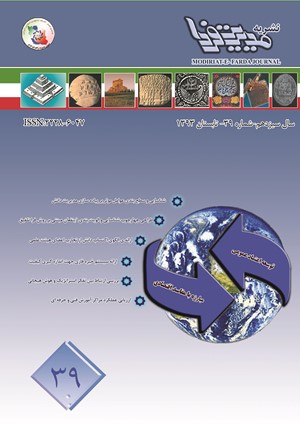شناسایی و سطح بندی عوامل موثر بر پیادهسازی مدیریت دانش با استفاده از مدل
محورهای موضوعی : مدیریت دانش
1 - دانشگاه پیام نور
کلید واژه: فرايند مديريت دانش مدلسازي ساختاري تفسيري,
چکیده مقاله :
امروزه دانش نقش اساسی در تحقق اهداف استراتژیک سازمان و کسب مزیت رقابتی ایفا میکند. دانش هم مانند هر منبع سازمانی دیگر باید مدیریت شود. لذا يكي از ضروريترين ملاحظات در راستای اجرای صحیح فرایند مدیریت دانش و پیادهسازی هرچه بهتر آن، شناسایی و سطح بندی عوامل موثر بر پیادهسازی مدیریت دانش است. این تحقیق با هدف شناسایی، سطح بندی و وزن دهی به این عوامل، انجام شده است. در این تحقیق، برای شناسایی عوامل سازماني موثر بر پیاده سازی صحیح مدیریت دانش از روش کتابخانهای و بررسی ادبیات موجود استفاده شد و در مرحله بعد با استفاده از مدل سازي ساختاري تفسيري روابط بين ابعاد و شاخصهاي موثر بر پیادهسازی مدیریت دانش تعریف شده است. نتیجه تحقیق نشان میدهد که مدل بدست آمده شامل 7 عامل فرهنگ سازمانی، تکنولوژی، ساختار سازمان، استراتژی، منابع انسانی، رهبری و محکزنی در چهار سطح میباشد،که محکزنی و بعد از آن تکنولوژی بیشترین قدرت نفوذ و توان پیشران را در دیگر عوامل دارند و همچنین وابستگي كمتري به ديگر عوامل دارند، لذا لازم است جهت پیادهسازی موفق مدیریت دانش بیشترین توجه به آنها مبذول گردد. بعد از آن، فاکتورهای استراتژی، ساختار و رهبری دارای توان پیشران و وابستگی بالا هستند و در سطح چهارم فرهنگ و منابع انسانی با کمترین توان نفوذ و بیشترین وابستگی قرار میگیرند.
Nowadays, knowledge has essential role in achieving strategic objectives and gain competitive advantage. Knowledge should be managed like any other organizational resource. Therefore, one of the most important considerations in order properly implement the knowledge management process, is the identification and Ranking of the factors affecting the implementation of knowledge management. In this research, to identify organizational factors affecting the proper implementation of knowledge management, review of the literature was performed and then interpretive structural modeling was used for defining the relations between dimensions and Indicators of effective on implementation of Knowledge Management. The results show that the model contains seven elements: organizational culture, technology, organizational structure, strategy, human resources, leadership and benchmarking. Benchmarking and then technology have the highest driving power, and there are also less dependent on ot her factors, so it is necessary for the successful implementation of knowledge management, they should be given the utmost attention. After that, strategy, structure and leadership have higher driving power and dependence. On The fourth level, culture and human resources are, that have the least driving power and highest dependence.


